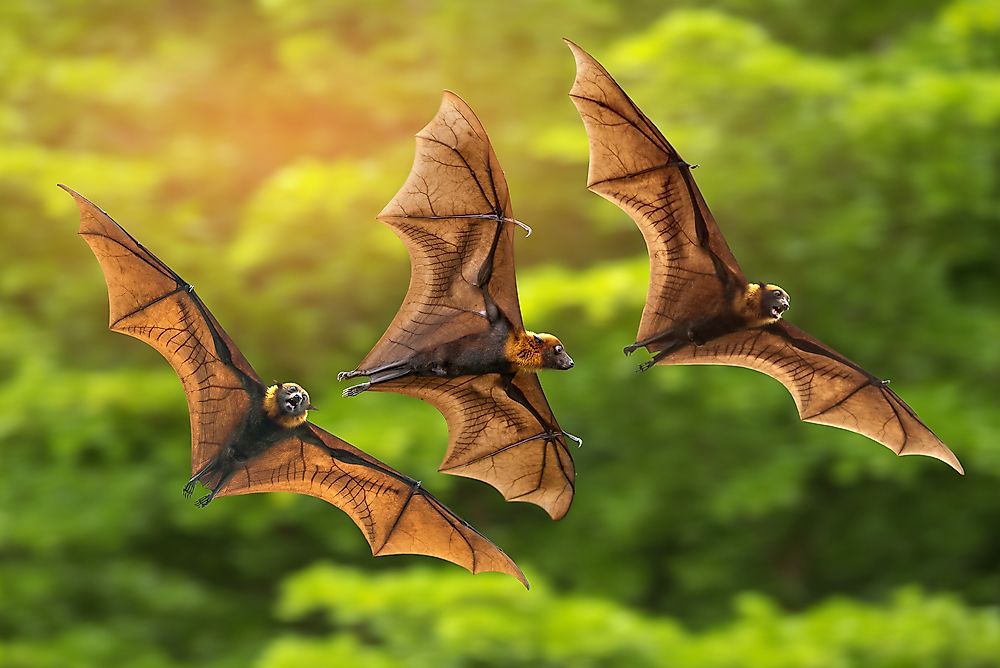How Many Bats Are There In The World?

Bats are found on every continent except for the coldest and most isolated parts of Earth, including some islands, the Arctic, and the Antarctic. It is estimated that there are 900 to over 1,200 species of bats in the world, making up one-fifth of Earth's total mammalian population, the second largest order after rodents. However, these numbers are relative measures as there could be more species of bats in the world. Most of the bat population is found in the tropics, with one-third of the total bat population in the world being found in South and Central America. The island country of Indonesia is a home for about 175 species of bats.
Bat Species
The two main types of bats are the megabats and the microbats. The main difference between the megabats and the microbats is the size of the bats. Most megabat species are larger in comparison to microbat species, with some exceptions. Megabats primarily feed on fruits and are less specialized. Examples of megabats include the Old World Fruit Birds and the Flying Foxes. Flying Foxes are the largest of all bat species with wings that span about five to six feet and weighing up to 2.2 lbs. Microbats, on the other hand, are highly specialized and are echolocating. The smallest of the bats is the Kittis hog-nosed bat, weighing about 2-2.6 grams and measuring about 29-34 mm.
Bat Behavior
Bats are the only mammals that are able to maintain a sustained flight. Most of the bat population, about 70%, feeds on insects. The rest of the bat population mainly feeds on fruits. Few of the bat population feed on animals. There exist also the vampire bats that feed on blood. Most of the bat species of Earth are nocturnal. Many bats in the world reside in caves and crevices on building and trees.
Significance of the Bat Population
While bats are revered in some parts of the world and considered as a sign of good fortune, many societies in the world have many misconceptions about bats linking them to diseases and ill omen. Therefore bats are not protected in many parts of the world. The bat population is consequently threatened by loss of habitats due to changing climate and attacks from a deadly fungus. However, it is important to note that bats are essential in controlling the overall health of the ecosystem. Knowing the population of bats in an ecosystem is not only critical to the understanding the health of the bat population but also the health of the ecosystem as a whole. This fact is because bats play a significant role in pollination, fruit dispersion, and seed dispersion, as well as in the destruction of crop-destroying insects.











